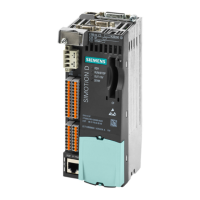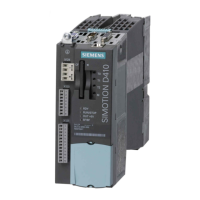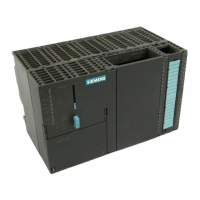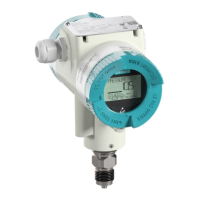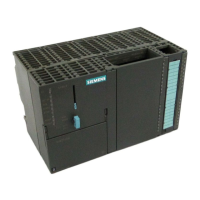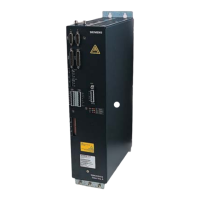● The
PROFIBUS Integrated of a SIMOTION D410‑2 is always isochronous! This means that
a current controller sampling time of 400 µs is not possible.
● With CU parameter p0092 = 1, the sampling times are preassigned in a way that enables
isochronous operation with a control system.
Output cams / measuring inputs with vector drives
In the case of devices in chassis format, the cycle clock ratios (current controller cycle clock,
speed controller cycle clock, input/output sampling time, etc.) also depend on the type of device
used.
Note the information in Section Current controller cycle clocks <> 125 µs / use of output cams
and measuring inputs (Page 182).
Additional references
Additional information on quantity structures and cycle clock settings can be found in the
SINAMICS S120
Function Manual.
7.4.3 Setting the SIMOTION time of day
Time on SIMOTION (real-time clock)
SIMOTION D410-2 features an integrated real-time clock. All events on a module (alarms,
messages, etc.) are "time-stamped" based on the time shown by this real-time clock.
Procedure
To set the clock in the SIMOTION SCOUT, select the SIMOTION D410-2 in the project tree
and then "Target system" > "Set time".
Alternatively, the clock can be set using the "rtc" system function block.
7.4.4 Synchronizing the SINAMICS clock
SINAMICS system runtime (operating hours counter)
For SINAMICS S120 Control Units and the SINAMICS Integrated on a SIMOTION D410-2,
faults and alarms are "time-stamped" on the basis of the system runtime. This means that
events are recorded by default on the basis of operating hours rather than a particular time of
day or date.
Commissioning (software)
7.4 Additional information on configuring the SINAMICS Integrated
SIMOTION D410-2
Commissioning and Hardware Installation Manual, 01/2015 173

